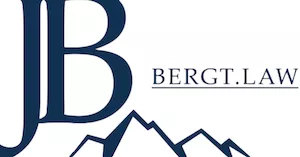Introduction
In the ever-evolving landscape of international tax law, the Directive on Administrative Cooperation (DAC), particularly its seventh iteration, DAC7, emerges as a pivotal development, signifying a paradigm shift in the realm of tax transparency and compliance. This analysis aims to dissect the intricacies of DAC7, elucidating its impact on international tax compliance. As a nexus of legal and economic discourse, DAC7 not only redefines the boundaries of tax information exchange but also poses significant challenges and opportunities for stakeholders in the global financial arena.
The Genesis of DAC7: A Historical Context
Tracing the trajectory of the Directive on Administrative Cooperation reveals a progressive expansion in the scope of tax information exchange. The inception of DAC1, rooted in the EU's strategy to combat tax fraud, laid the groundwork for a more unified approach to tax information exchange within the Union. Subsequent iterations, from DAC2 through DAC6, progressively broadened the spectrum of information exchange, encompassing bank data, cross-border tax rulings, country-by-country reporting, and aggressive tax planning models. DAC7, however, marks a significant leap, extending the ambit to digital platforms, a move reflective of the digitalization of the global economy.
DAC7: Unraveling the Directive
At the heart of DAC7 lies the objective to enhance transparency and tax fairness in activities facilitated by digital platforms. This directive mandates the automatic exchange of information regarding sellers on digital platforms, encompassing a wide array of services and goods. The implications of DAC7 are far-reaching, extending beyond traditional financial institutions to encompass the burgeoning digital economy.
Key Provisions of DAC7
- Scope of Application: DAC7 applies to a broad spectrum of digital platforms, encompassing those facilitating the rental of real estate, personal services, sale of goods, and rental of transport means.
- Information Exchange Requirements: Digital platform operators are obligated to report detailed information about sellers, including identity, revenue generated, and the nature of services or goods sold.
- Compliance Obligations: Platform operators must adhere to stringent due diligence and reporting requirements, ensuring accurate and timely information exchange.
Challenges and Opportunities
- Compliance Burden: The expanded scope of information reporting under DAC7 poses significant compliance challenges for digital platform operators, necessitating robust systems for data collection and processing.
- Legal and Regulatory Implications: The harmonization of DAC7 with existing national laws and international agreements requires meticulous legal analysis and strategic adaptation.
- Opportunities for Enhanced Transparency: DAC7 presents an opportunity to foster greater tax transparency, potentially enhancing trust in digital platforms and the broader financial system.
DAC7 represents a critical juncture in the evolution of international tax law, reflecting a concerted effort to adapt to the digitalization of the global economy. Its implementation test for the effectiveness of international tax cooperation in the digital age. As legal practitioners and policymakers navigate this new terrain, the principles of fairness, transparency, and compliance remain paramount.
Scope and Purpose of DAC 1-7
- DAC 1 (Directive 2011/16/EU):
- Scope: DAC 1 laid the foundation for administrative cooperation in the field of taxation, focusing on direct taxes. It aimed to standardize the exchange of information on request among EU member states, ensuring that one state's request for information is not hindered by bank secrecy laws in another state.
- Purpose: The primary objective was to establish a framework for the exchange of information relevant to tax matters, thereby enhancing the ability of member states to assess and collect taxes effectively.
- DAC 2 (Directive 2014/107/EU):
- Scope: This directive expanded the scope of DAC 1 by including automatic exchange of financial account information, inspired by the global Common Reporting Standard (CRS).
- Purpose: DAC 2 aimed to combat tax evasion by requiring financial institutions to report information about account holders resident in other EU states, thereby ensuring transparency of financial assets and income held in other jurisdictions.
- DAC 3 (Directive 2015/2376/EU):
- Scope: It introduced the automatic exchange of information on tax rulings and advance pricing arrangements, which are particularly relevant in the context of transfer pricing.
- Purpose: The directive sought to prevent aggressive tax planning by ensuring that member states are informed about cross-border tax rulings that could affect their tax bases.
- DAC 4 (Directive 2016/881/EU):
- Scope: This stage introduced country-by-country reporting for large multinational enterprises, requiring detailed reporting on the allocation of income, taxes paid, and economic activity among countries.
- Purpose: DAC 4 aimed to provide tax authorities with a comprehensive view of how multinationals allocate their profits across jurisdictions, aiding in the assessment of transfer pricing risks and other tax avoidance strategies.
- DAC 5 (Directive 2016/2258/EU):
- Scope: It extended access to beneficial ownership information, aligning with the EU's Anti-Money Laundering directives.
- Purpose: The directive was designed to enhance transparency by granting tax authorities access to information about the beneficial owners of entities and arrangements, crucial for investigating complex tax evasion schemes.
- DAC 6 (Directive 2018/822/EU):
- Scope: This directive mandates the reporting of cross-border tax planning arrangements by intermediaries or taxpayers.
- Purpose: DAC 6 aims to tackle aggressive tax planning by requiring early reporting of potentially aggressive tax arrangements, thus enabling prompt assessment and response by tax authorities.
- DAC 7 (Directive 2021/514/EU):
- Scope: The latest directive focuses on the digital economy, specifically targeting digital platform operators.
- Purpose: DAC 7 aims to ensure that income generated through digital platforms is appropriately reported and taxed, addressing the challenges posed by the digitalization of the economy to traditional tax systems.
The progression from DAC 1 to DAC 7 illustrates a dynamic and responsive approach to the evolving landscape of international taxation. Each directive builds upon its predecessors, collectively forming a robust framework that addresses various aspects of tax transparency and cooperation. This framework not only combats tax evasion and avoidance but also fosters a fairer and more equitable international tax environment. As the global economy continues to evolve, particularly with the increasing digitalization of business models, the principles and mechanisms enshrined in the DAC directives will remain crucial in ensuring effective tax governance and compliance.
DAC 7 extends the EU tax transparency rules to digital platforms. This directive introduces a new set of obligations for reporting platform operators, mandating the collection, verification, and reporting of specific information about reportable sellers engaged in relevant activities through these platforms. Additionally, DAC 7 facilitates an automatic exchange of information between EU tax authorities and establishes a legal framework for joint audits, enhancing the efficiency and effectiveness of tax compliance and enforcement.
Key Aspects of DAC 7
- Definition of a Platform:
- DAC 7 defines a platform as any software, including websites or parts thereof, and applications (including mobile applications) that enable users to connect with others for the purpose of conducting a relevant activity. This definition encompasses a broad range of digital interfaces but excludes software solely used for processing payments, listing or advertising activities, or redirecting users to another platform.
- Reporting Platform Operator:
- A platform operator becomes a "reporting platform operator" if it meets certain criteria, such as being resident for tax purposes in a Member State, having its place of management or a permanent establishment in a Member State. Additionally, operators facilitating relevant activities for sellers resident in a Member State or involving the rental of immovable property located in a Member State also fall under this category.
- Reportable Seller:
- The directive defines a reportable seller as an individual or entity registered on the platform and engaged in a relevant activity, either resident in a Member State or renting out immovable property located in a Member State. Exclusions apply to government entities, entities with publicly traded stock, and those involved in a high volume of property rentals or minimal transactions.
- Relevant Activity:
- Relevant activities under DAC 7 include the rental of immovable property, personal services, sale of goods, and rental of any mode of transport. Activities conducted by sellers as employees of the platform operator or its related entities are excluded.
- Reportable Information:
- Platform operators are required to collect extensive information, including the seller's name, tax identification number (TIN and VAT), tax residence, and financial accounts. This information must be verified and periodically renewed, with cross-checking against EU public databases.
- Reporting Deadlines and Penalties:
- Reporting platform operators must file their first declaration by January 31, 2024, for the calendar year 2023. Non-compliance attracts penalties, including fines for failure to register, retain documentation, apply due diligence, and report accurately and timely.
Implications and Challenges
The implementation of DAC 7 introduces several challenges and implications for digital platform operators:
- Compliance Burden: The directive imposes a significant administrative burden on platform operators, requiring them to establish robust systems for data collection, verification, and reporting.
- Legal and Operational Adjustments: Operators must adapt their legal and operational frameworks to comply with the new requirements, which may involve substantial changes to their existing processes and systems.
- Cross-Jurisdictional Coordination: The directive necessitates enhanced coordination between platform operators and tax authorities across different jurisdictions, particularly in the context of joint audits and information exchange.
- Data Privacy Concerns: The collection and reporting of detailed seller information raise data privacy concerns, requiring operators to ensure compliance with data protection regulations.
- Penalties for Non-Compliance: The stringent penalty regime underscores the need for diligent compliance, as failure to meet the directive's requirements can result in substantial financial penalties.
Source: DAC 1-7
Executive Summary:
- DAC 7 extends EU tax transparency rules to digital platforms, mandating reporting obligations for platform operators and facilitating information exchange between EU tax authorities.
- Platforms are broadly defined to include various digital interfaces, with specific exclusions.
- Reporting Platform Operators are identified based on tax residency, management location, or facilitation of relevant activities in a Member State.
- Reportable Sellers include individuals or entities engaged in relevant activities, with certain exclusions.
- Relevant Activities encompass a range of commercial transactions, excluding those conducted by employees of the platform operator.
- Reportable Information is extensive and requires verification and periodic renewal.
- Compliance with DAC 7 is crucial, given the stringent penalties for non-compliance, highlighting the need for platform operators to adapt their operational and legal frameworks accordingly.
- Compliance with DAC7 poses significant challenges but also offers opportunities for enhanced transparency in the digital economy.
- The directive reflects a broader trend towards adapting international tax laws to the realities of a digitalized global economy.
- DAC 1-7 represent a comprehensive approach to enhancing tax
transparency and cooperation within the EU, each addressing
specific aspects of tax compliance and evasion.
- DAC 1 established the framework for information exchange on tax matters, overcoming barriers like bank secrecy.
- DAC 2 expanded this to include automatic exchange of financial account information, aligning with global standards.
- DAC 3 introduced automatic exchange of information on tax rulings, targeting transfer pricing and aggressive tax planning.
- DAC 4 mandated country-by-country reporting by multinationals, providing tax authorities with detailed data on global profit allocation.
- DAC 5 aligned tax transparency with anti-money laundering efforts by granting access to beneficial ownership information.
- DAC 6 focused on preemptive reporting of cross-border tax planning arrangements to combat aggressive tax strategies.
- DAC 7 adapted to the digital economy, targeting digital platform operators to ensure proper reporting and taxation of digital income.
The content of this article is intended to provide a general guide to the subject matter. Specialist advice should be sought about your specific circumstances.

